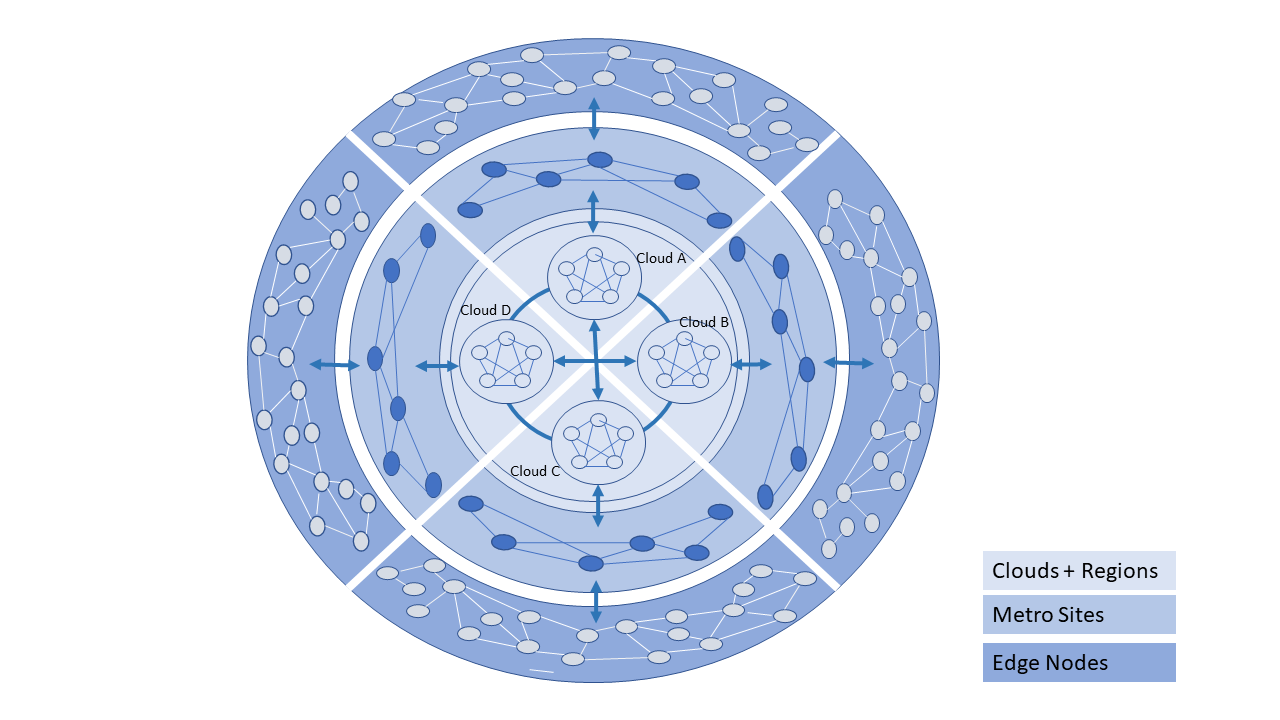
The GSMA whitepaper on "Operator Platform Concept Phase 1: Edge Cloud Computing" (January 2020) states, "Given the wide diversity of use cases that the operators will tasked to address, from healthcare to industrial IoT, it seems logical for operators to create a generic platform that can package the existing assets and capabilities (e.g., voice messaging, IP data services, billing, security, identity management, etc. ...) as well as the new ones that 5G makes available (e.g., Edge cloud, network slicing, etc.) in such a way as to create the necessary flexibility required by this new breed of enterprise customers."
Cloud computing has evolved and matured since 2010 when NIST (http://csrc.nist.gov/publications/nistpubs/800-145/SP800-145.pd) published its definition of cloud computing, with its 5 essential characteristics, 3 service models and 4 deployment models.
The generic model for an enterprise cloud has to be "hybrid" with the special cases of purely private or public clouds as subsets of the generic hybrid cloud deployment model. In a hybrid cloud deployment, at least two or more distinct cloud infrastructures are inter-connected together.

Cloud deployments can be created using a variety of open-source (e.g., OpenStack, Kubernetes) and commercial technologies (e.g., VMware). A multi-cloud deployment consists of the use of more than one technology.
A generic Telco cloud is an hybrid multi-cloud. In this section we will further explore the characteristics of the hybrid multi-cloud, architecture and architecture building blocks that constitute the hybrid multi-cloud. For example, an enterprise cloud that consists of 4 sub-clouds: Private on prem, Cloud Vendor provided on prem, Private outsourced (Commercial Cloud Provider such as an HCP), and Public outsourced (see diagram below). Such an implementation of an enterprise cloud allows for mix'n'match of price points, flexibility in market positioning and time to market, capacity with the objective of attaining near "unlimited" capacity, scaling within a sub-cloud or through bursting across sub-clouds, access to "local" capacity near user base, and access to specialised services.

The Figure below presents a visualisation of a Telco operator cloud (or simply, Telco cloud) with clouds and cloud components distributed across Regional Data Centers, Metro locations (such as Central Office or a Colocation site) and at the Edge, that are interconnected using a partial mesh network. Please note that at the Regional center level the interconnections are likely to be a "fuller" mesh while being a sparser mesh at the Edges.

| Type | System Developer | System Maintenance | System Operated & Managed by | Location where Deployed | Primary Resource Consumption Models |
|---|---|---|---|---|---|
| Private (Internal Users) | Open Source | Self/Vendor | Self/Vendor | On Prem | Reserved, Dedicated |
| Private | Vendor | HCP | Self/Vendor | Self/Vendor | On Prem | Reserved, Dedicated |
| Public | Vendor | HCP | Self/Vendor | Self/Vendor | On Prem | Reserved, On Demand |
| Private | HCP | Vendor | Vendor | Vendor Locations | Reserved, Dedicated |
| Public (All Users) | HCP | Vendor | Vendor | Vendor Locations | On Demand, Reserved |